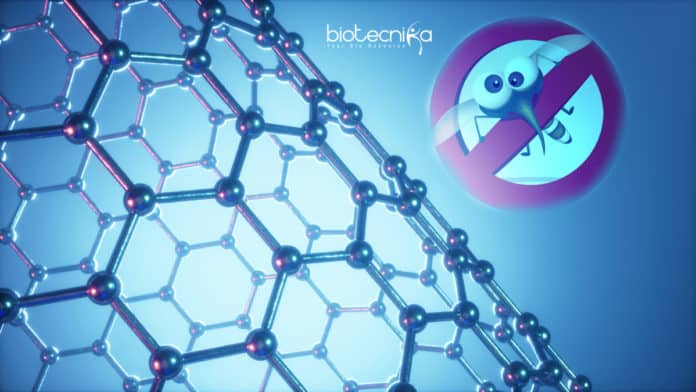Mosquito Repellent Graphene Clothes Can Put An End To Bite Misery
The material used in Mosquito repellent graphene clothes i.e, the nanomaterial graphene has received significant attention for its various potential uses in everything right from solar cells to even tennis rackets. Now, a new study by Brown University researchers finds a surprising new use for this attention seeker material, i.e, in preventing mosquito bites.
In a paper, scientists showed that multilayer graphene can provide a two-fold defense against mosquito bites. Graphene which is ultra-thin yet strong material acts as a barrier that mosquitoes are unable to bite through. Along with this, experiments showed that graphene also blocks chemical signals mosquitoes use to sense that a blood meal is near which blunts their urge to bite in the first place. The findings of the study suggest that clothes with a graphene lining could be an effective mosquito barrier. The paper on this study is published in Proceedings of the National Academy of Sciences,
Robert Hurt who is a professor in Brown’s School of Engineering and senior author of the paper said that the mosquitoes are important vectors for many diseases all over the world, and there is a lot of interest
in non-chemical mosquito bite protection globally. He added that researchers had been working on clothes that incorporate graphene as a barrier against toxic chemicals, and the team started thinking about what else the approach might be good for. The research team thought maybe graphene could provide mosquito bite protection as well.In order to find out if this idea would work, the researcher team recruited some brave participants who were willing to get a few mosquito bites in the name of science. These participants placed their arms in a mosquito-filled enclosure leaving only a small patch of their skin was exposed or available to the mosquitoes for biting. The mosquitoes used here were bred in the lab so they could be confirmed to be disease-free.
The scientists compared the number of bites participants received on their bare skin as well as on skin covered in cheesecloth and also on skin covered by graphene oxide (GO) films sheathed in cheesecloth. Graphene Oxide is a graphene derivative that can be made into films which are large enough for macro-scale applications.
It was readily apparent that graphene was a mosquito bite deterrent or say mosquito repellent, the scientists found. When the skin was covered by dry Graphene Oxide films, participants didn’t even get a single bite, where the bare and cheesecloth-covered skin was readily feasted upon by the mosquitoes. According to the researchers what surprised them was that the mosquitoes completely changed their behavior in the presence of the graphene-covered arm.
Cintia Castilho who is a Ph.D. student at Brown and the study’s lead author said that with the graphene lining, the mosquitoes weren’t even landing on the skin patch. The research team had assumed that graphene would be a physical barrier to mosquito biting, through puncture resistance, but when the researchers saw these experiments they started to think that it was also a chemical barrier which prevents mosquitoes from sensing that someone is there, added Castilho.
In order to confirm the graphene as a chemical barrier idea, the scientists dabbed some human sweat onto the outside of a graphene barrier. The mosquitoes flocked to the patch where the human sweat was dabbed in much the same way they flocked to bare skin.
Other experiments on this mosquito repellent graphene material showed that Graphene Oxide can also provide puncture resistance which doesn’t happen not all the time. Then, using a tiny needle as a stand-in for a mosquito’s proboscis, and computer simulations of the mosquito biting process, the researcher team showed that mosquitoes simply can’t generate enough force to puncture Graphene Oxide. But this was applicable only when the Graphene Oxide is dry. The computer simulations found that Graphene Oxide would be vulnerable to puncture when it was saturated with water. And sure enough, experiments of the study showed that mosquitoes could bite through wet Graphene Oxide. However, another form of Graphene Oxide with reduced oxygen content (called rGO) was shown to provide a mosquito bite barrier when both wet and dry.
This focus of the further studies would be to find a way to stabilize the Graphene Oxide so that it’s tougher when wet, and that is because Graphene Oxide has a distinct advantage over rGO when it comes to wearable technology, said Hurt.
Hurt added that Graphene Oxide material is breathable which means one can sweat through it where rGO isn’t! So the preferred embodiment of this technology would be to find a way to stabilize Graphene Oxide mechanically so that it remains strong even when wet. This next step of the study would give us the full benefits of breathability along with bite protection or say Mosquito repellent graphene clothes!
The new study suggests that properly engineered graphene linings could be used to make mosquito protective clothing. Other co-authors on this study were Dong Li, Muchun Liu, Yue Liu, and Huajian Gao.






























